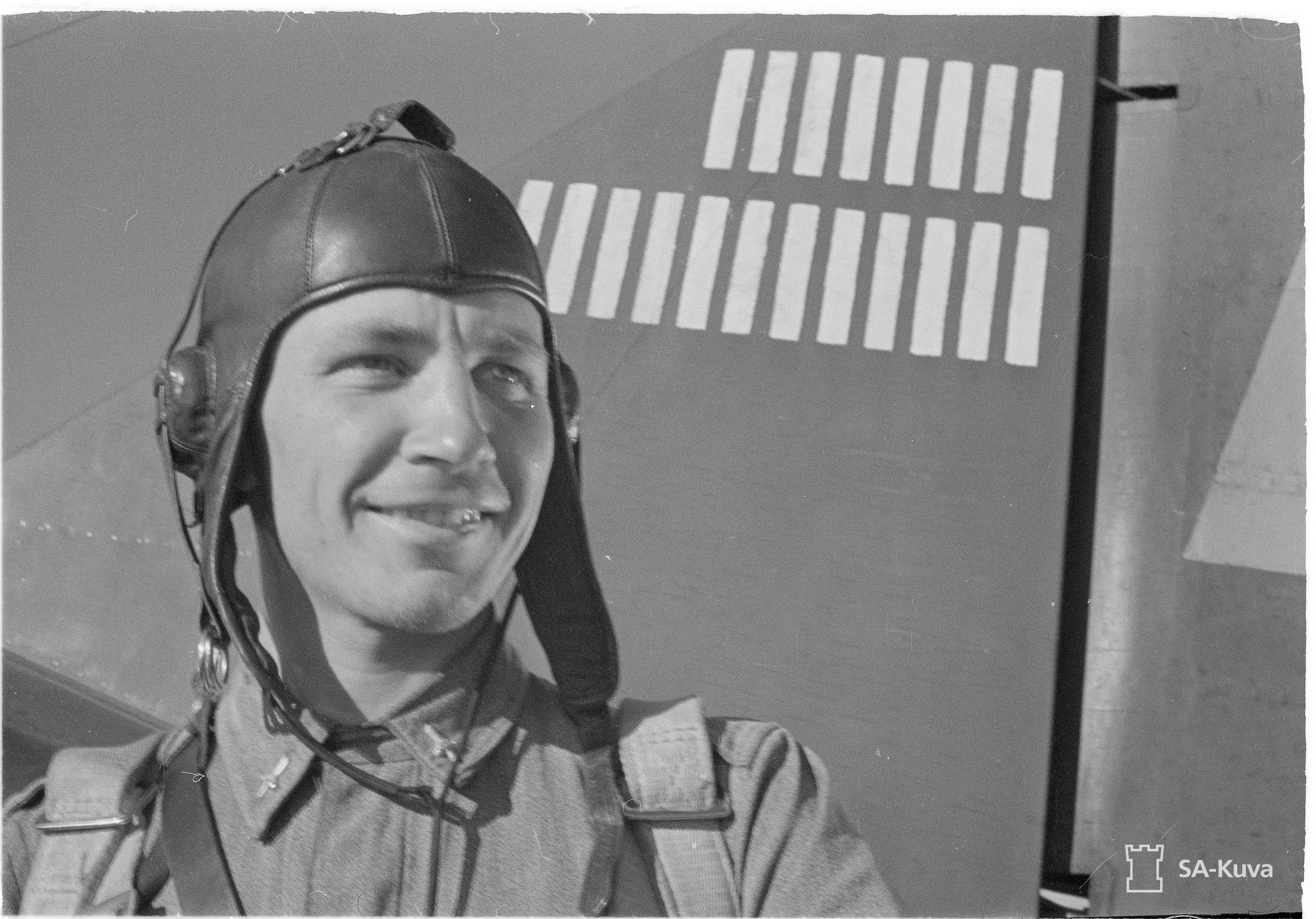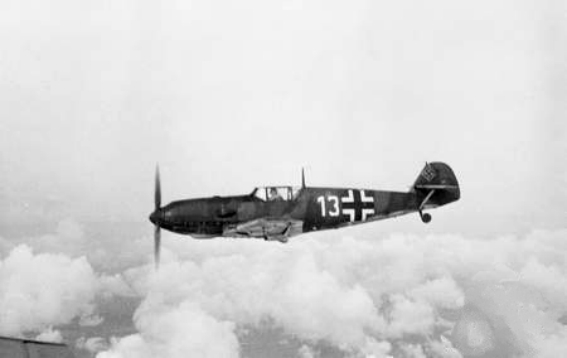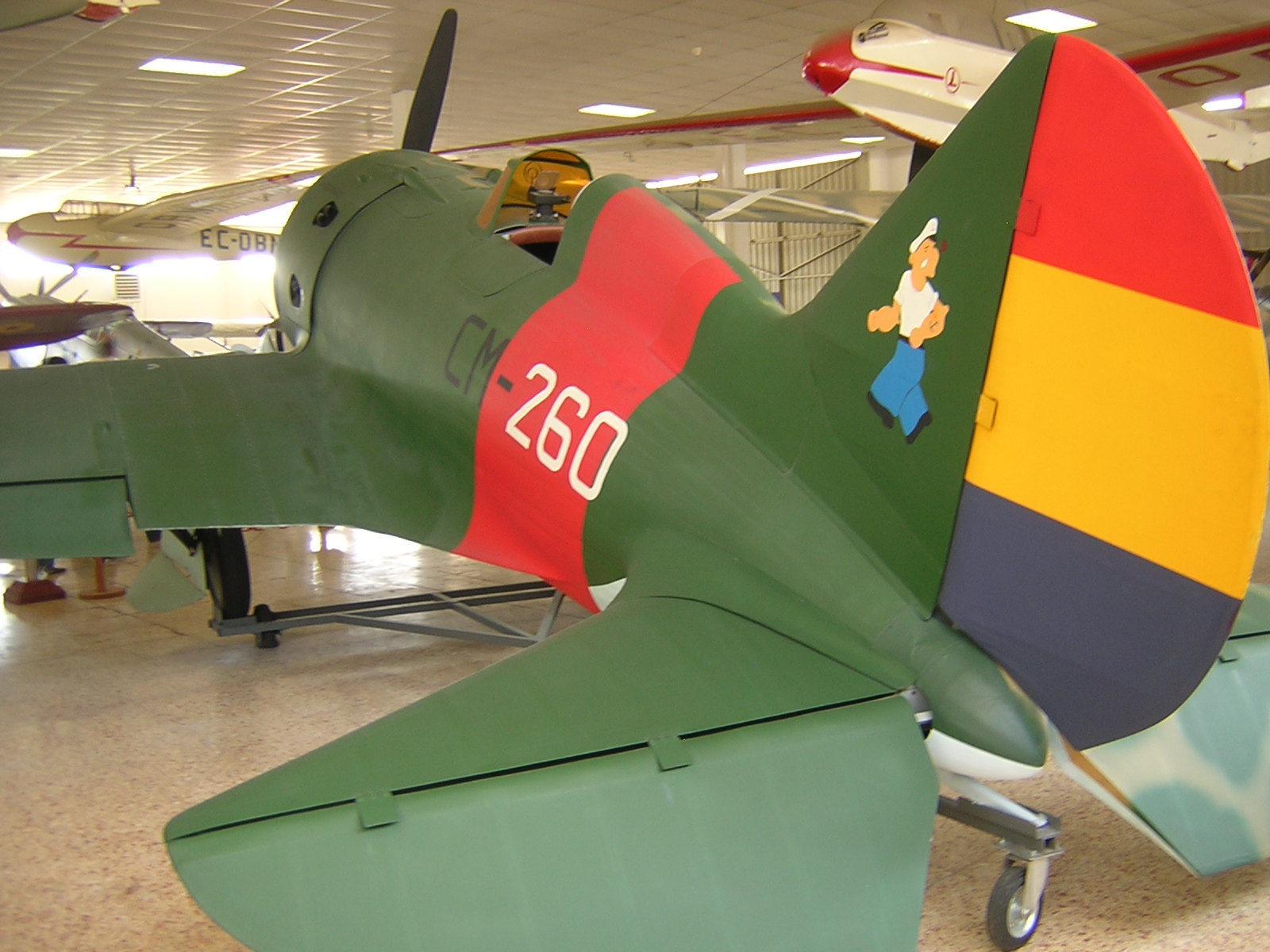|
Gotthard Handrick
Gotthard Handrick (25 October 1908 – 30 May 1978) was a German Olympic athlete and German fighter pilot during the Spanish Civil War and World War II. Career Handrick was born on 25 October 1908 in Zittau, at the time in the Kingdom of Saxony as part of the German Empire. He won the gold medal in the modern pentathlon at the 1936 Summer Olympics in Berlin. In July 1937, Handrick was appointed '' Gruppenkommandeur'' (group commander) of ''Jagdgruppe'' 88 (18 July 1937 – 10 September 1938). This unit fought in the Spanish Civil War where he claimed five aerial victories while flying for the Legion Condor, including a Polikarpov I-15 fighter on 9 September 1937 and an Polikarpov I-16 fighter on 18 May 1938. He was later awarded the Spanish Cross in Gold with Swords () on 14 April 1939 for his service in the Spanish Civil War. Handrick was then given command of I. ''Gruppe'' of ''Jagdgeschwader'' 132 "Schlageter" on 11 September 1938 after his return from Spain. This unit ... [...More Info...] [...Related Items...] OR: [Wikipedia] [Google] [Baidu] |
Zittau
Zittau ( hsb, Žitawa, dsb, Žytawa, pl, Żytawa, cs, Žitava, :de:Oberlausitzer Mundart, Upper Lusatian Dialect: ''Sitte''; from Slavic languages, Slavic "''rye''" (Upper Sorbian and Czech: ''žito'', Lower Sorbian: ''žyto'', Polish: ''żyto'')) is the southeasternmost city in the Germany, German state of Saxony, and is located in the Görlitz (district), district of Görlitz, Germany's easternmost Districts of Germany, district. It has a population of around 25,000, and is one of the most important cities in the region of Lusatia (Upper Lusatia). The inner city of Zittau still shows its original beauty with many houses from several architectural periods: the famous town hall built in an Italian style, the church of St John and the stables (''Salzhaus'') with its medieval heritage. This multi-storied building is one of the oldest of its kind in Germany. Geography Zittau sits on the Mandau River, while the Lusatian Neisse, which forms the border with Poland, touches the city i ... [...More Info...] [...Related Items...] OR: [Wikipedia] [Google] [Baidu] |
Fighter Pilot
A fighter pilot is a military aviator trained to engage in air-to-air combat, air-to-ground combat and sometimes electronic warfare while in the cockpit of a fighter aircraft. Fighter pilots undergo specialized training in aerial warfare and dogfighting (close range aerial combat). A fighter pilot with at least five air-to-air kills becomes known as an ace. Recruitment Fighter pilots are one of the most highly regarded and desirable positions of any air force. Selection processes only accept the elite out of all the potential candidates. An individual who possesses an exceptional academic record, physical fitness, healthy well-being, and a strong mental drive will have a higher chance of being selected for pilot training. Candidates are also expected to exhibit strong leadership and teamwork abilities. As such, in nearly all air forces, fighter pilots, as are pilots of most other aircraft, are commissioned officers. Fitness Fighter pilots must be in optimal health to ... [...More Info...] [...Related Items...] OR: [Wikipedia] [Google] [Baidu] |
Generalleutnant
is the Germanic variant of lieutenant general, used in some German speaking countries. Austria Generalleutnant is the second highest general officer rank in the Austrian Armed Forces (''Bundesheer''), roughly equivalent to the NATO rank of OF-8. Belgium Germany ''Generalleutnant'', short ''GenLt'', ('lieutenant general') is the second highest general officer rank in the German Army (''Heer'') and the German Air Force (''Luftwaffe''). This three-star rank in other countries is lieutenant general. Rank in modern Germany The rank is rated OF-8 in NATO, and is grade B9 in the pay rules of the Federal Ministry of Defence. It is equivalent to ''Vizeadmiral'' in the German Navy (''Marine''), or to Generaloberstabsarzt, and Admiraloberstabsarzt in the '' Zentraler Sanitätsdienst der Bundeswehr''. On the shoulder straps (Heer, Luftwaffe) there are three golden pips (stars) in golden oak leaves. History German armies and air forces until 1945 =Generalleutnant of the Wehrm ... [...More Info...] [...Related Items...] OR: [Wikipedia] [Google] [Baidu] |
Jagdgeschwader 26
''Jagdgeschwader'' 26 (JG 26) ''Schlageter'' was a German fighter-wing of World War II. It was named after Albert Leo Schlageter, a World War I veteran, Freikorps member, and posthumous Nazi martyr, arrested and executed by the French for sabotage in 1923. The wing fought predominantly against the Western Allies. Formed in May 1939, JG 26 spent the Phoney War period guarding Germany's western borders following the German invasion of Poland and the outbreak of World War II. In May and June 1940 it served in the Battle of Belgium and Battle of France. From July 1940 it operated over England in the Battle of Britain under the command of Adolf Galland, future ''General der Jagdflieger''. JG 26 remained in France and Belgium fighting against the RAF Fighter Command Circus offensive in 1941 and 1942, with considerable tactical success. In 1943 it faced the USAAF Eighth Air Force, and along with the rest of the Luftwaffe fighter force, was worn down over Western Europe ... [...More Info...] [...Related Items...] OR: [Wikipedia] [Google] [Baidu] |
Jagdgeschwader 132
''Jagdgeschwader'' 132 (JG 132) was a fighter wing of Nazi Germany's Luftwaffe before World War II. Formed in 1934 under the cover of ''Reklamestaffel Mitteldeutschland des DLV''. In 1938, the wing was renamed ''Jagdgeschwader'' 131 and in May 1939 became ''Jagdgeschwader'' 2 "Richthofen". The second formation of JG 132 in November 1938 was initiated by renaming ''Jagdgeschwader'' 234 to JG 132 which then became ''Jagdgeschwader'' 26 "Schlageter" in May 1939. I. ''Gruppe'' of JG 132 was given the honorary name "Richthofen", named after Manfred von Richthofen, in March 1935. With the reformation of JG 132 in November 1938, the ''Geschwader'' carried the honorary name "Schlageter", named after Albert Leo Schlageter. History JG 132 was the oldest fighter unit of the Luftwaffe, its roots dating back to 1934. The first element of JG 132 formed was I. '' Gruppe'' (1st group) under the cover name ''Reklamestaffel Mitteldeutschland des DLV'' (Advertisement ... [...More Info...] [...Related Items...] OR: [Wikipedia] [Google] [Baidu] |
Polikarpov I-16
The Polikarpov I-16 (russian: Поликарпов И-16) is a Soviet single-engine single-seat fighter aircraft of revolutionary design; it was the world's first low-wing cantilever monoplane fighter with retractable landing gear to attain operational status and as such "introduced a new vogue in fighter design".Green, William. "Polikarpov's Little Hawk". ''Flying Review'', November 1969. The I-16 was introduced in the mid-1930s and formed the backbone of the Soviet Air Force at the beginning of World War II. The diminutive fighter, nicknamed "''Ishak''" or "''Ishachok''" ("donkey" or "burro") by Soviet pilots, figured prominently in the Second Sino-Japanese War,Liss 1966, p. 10. the Battle of Khalkhin Gol, Winter War and the Spanish Civil War – where it was called the (" rat") by the Nationalists or ("fly") by the Republicans. The Finns called the aircraft as "( flying squirrel)". Design and development While working on the Polikarpov I-15 biplane, Nikolai ... [...More Info...] [...Related Items...] OR: [Wikipedia] [Google] [Baidu] |
Polikarpov I-15
The Polikarpov I-15 (russian: И-15) was a Soviet biplane fighter aircraft of the 1930s. Nicknamed ''Chaika'' (''russian: Чайка'', "Seagull") because of its gulled upper wings,Gunston 1995, p. 299.Green and Swanborough 1979, p. 10. it was operated in large numbers by the Soviet Air Force, and together with the Polikarpov I-16 monoplane, was one of the standard fighters of the Spanish Republicans during the Spanish Civil War, where it was called Chato (snub-nose). Design and development The design for the 14th fighter for the VVS, the I-14, started as an advanced (for the era) monoplane under the direction of Andrei Tupolev. He grew concerned that the design would not mature, and ordered two backup biplane designs as the I-14A and B just to be safe. Polikarpov had just been released from prison in August 1932, and was handed the I-14A project. When both the I-14 and I-14A were ordered into production, Polikarpov's design, a development of the I-5 fighter became the famous ... [...More Info...] [...Related Items...] OR: [Wikipedia] [Google] [Baidu] |
Legion Condor
The Condor Legion (german: Legion Condor) was a unit composed of military personnel from the air force and army of Nazi Germany, which served with the Nationalist faction during the Spanish Civil War of July 1936 to March 1939. The Condor Legion developed methods of strategic bombing that were shortly afterward used widely during the Second World War. The bombing of Guernica was the most infamous operation carried out by the Condor Legion. Hugo Sperrle commanded the unit's aircraft formations and Wilhelm Ritter von Thoma commanded the ground element. History of military aid to Spain After the military coup in Spain on 17 July 1936 started the Spanish Civil War, the Nationalists requested the support of Nazi Germany and Fascist Italy. The first request for German aircraft was made on 22 July, with an order for 10 transport aircraft. The German Führer Adolf Hitler decided to support the Nationalists on 25 or 26 July, but was wary of provoking a wider European war.Westwell ... [...More Info...] [...Related Items...] OR: [Wikipedia] [Google] [Baidu] |
Jagdgruppe 88
''Jagdgruppe'' 88 (J/88) was a German Condor Legion fighter group serving in the Spanish Civil War. J/88 consisted of a headquarters (''Stab'') and four squadrons (''Staffeln''), although the 4th Staffel was short-lived. J/88 had formed on 3 November 1936. Formation The Condor Legion was an expeditionary force of soldiers and airmen sent to aid the Spanish Nationalist group during the Spanish Civil War. The Germans used the war as an opportunity to evaluate new equipment, guns, vehicles and aircraft, and to develop tactical techniques which were later used in the 1939-45 conflict. In addition to a detachment of converted Junkers Ju 52s, a initial cadre of six Heinkel He-51s, were despatched, with enough service staff to instruct the Spanish aircrews in the operation and maintenance of the aircraft. Under the leadership of Leutnant Hannes Trautloft J/88 arrived by sea in August 1936. While the Spanish Air Force pilots trained, Trautloft and the other pilots became the first of a ... [...More Info...] [...Related Items...] OR: [Wikipedia] [Google] [Baidu] |
Gruppenkommandeur
''Gruppenkommandeur'' is a Luftwaffe position (not rank), that is the equivalent of a commander of a group or wing in other air forces. A ''Gruppenkommandeur'' usually has the rank of Major or ''Oberstleutnant'' (Lieutenant Colonel), and commands a '' Gruppe'', which is a sub-unit of a ''Geschwader''. A ''Gruppe'' usually consists of three or four '' Staffeln'' (each of which is commanded by a ''Staffelkapitän''). See also *Organization of the Luftwaffe (1933–1945) Between 1933 and 1945, the organization of the Luftwaffe underwent several changes. Originally, the German military high command, for their air warfare forces, decided to use an organizational structure similar to the army and navy, treating the ... Military ranks of Germany Luftwaffe Air force appointments {{aviation-stub ... [...More Info...] [...Related Items...] OR: [Wikipedia] [Google] [Baidu] |
Berlin
Berlin ( , ) is the capital and largest city of Germany by both area and population. Its 3.7 million inhabitants make it the European Union's most populous city, according to population within city limits. One of Germany's sixteen constituent states, Berlin is surrounded by the State of Brandenburg and contiguous with Potsdam, Brandenburg's capital. Berlin's urban area, which has a population of around 4.5 million, is the second most populous urban area in Germany after the Ruhr. The Berlin-Brandenburg capital region has around 6.2 million inhabitants and is Germany's third-largest metropolitan region after the Rhine-Ruhr and Rhine-Main regions. Berlin straddles the banks of the Spree, which flows into the Havel (a tributary of the Elbe) in the western borough of Spandau. Among the city's main topographical features are the many lakes in the western and southeastern boroughs formed by the Spree, Havel and Dahme, the largest of which is Lake Müggelsee. Due to its l ... [...More Info...] [...Related Items...] OR: [Wikipedia] [Google] [Baidu] |
Modern Pentathlon
The modern pentathlon is an Olympic sport consisting of fencing (one-touch épée), freestyle swimming, equestrian show jumping, pistol shooting, and cross country running. The event is inspired by the traditional pentathlon held during the ancient Olympics. The modern pentathlon was first held in 1912, and its rules have changed several times over the years. The latest structure, as of the 2020 Olympics, consists of three separate events for fencing, swimming, and equestrian, which determine each athlete's starting time in the final event. The last event, called the laser-run, alternates four legs of laser pistol shooting followed by an 800 m run (for 3200 m in total). The sport has been a feature of the Summer Olympic Games since 1912, despite several attempts to remove it. A world championships for modern pentathlon has been held annually since 1949. The governing body, Union Internationale de Pentathlon Moderne (UIPM), administers the international sport in more t ... [...More Info...] [...Related Items...] OR: [Wikipedia] [Google] [Baidu] |






